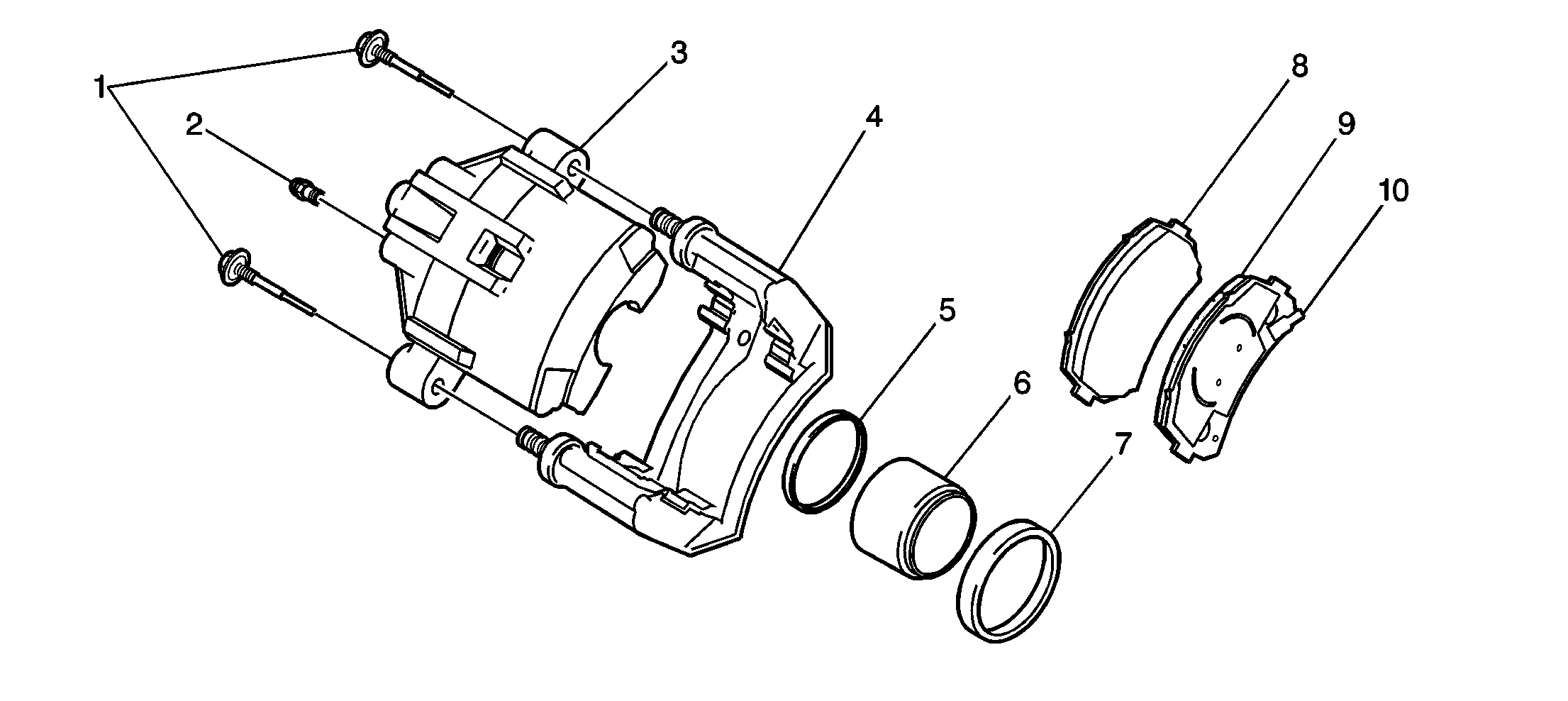
Important:
• Replace all the components included in repair kits that are used
to service this caliper. • Lubricate the rubber parts with clean brake fluid in order to
ease assembly. • Do not use lubricated compressed air on brakes. Doing so may damage
the rubber components. • Bleed the entire brake system whenever you remove any hydraulic
component. • Replace the brake pads in axle sets only. • The specified torque values are for dry, non-lubricated fasteners. • Perform service operations on a clean bench.
The caliper used on this vehicle has a single bore. The caliper (3) mounts to the support bracket (4) with two mounting bolts (1). When the brake pedal is pushed, hydraulic pressure is converted by the caliper to a stopping force. The force acts equally against the piston (6) and the bottom of the caliper bore. The force moves the piston outward and slides the caliper inward. This motion results in a clamping action on the rotor. The clamping action forces the pads against the rotor. The friction created between the pads and the rotor stops the vehicle.
Refinishing Brake Rotors
Do not refinish brake rotors when performing routine brake maintenance, such as replacing worn disc brake pads. Refinish a rotor only under the following circumstances:
| • | There is a complaint of brake pulsation. |
| • | There is scoring greater than 1.5 mm (0.060 in). |
All of the brake rotors have a minimum thickness dimension cast into them. This dimension is a minimum wear dimension, not a refinishing dimension. Do not use a brake rotor that, after refinishing, will not meet the specifications shown on the rotor. Use a new rotor.
Accurate control of the rotor tolerance is necessary for proper performance of the disc brakes. Use only precision equipment in order to machine the rotor. Service the machining equipment on a regular basis. Follow the manufacturer's recommended maintenance procedure.
The following tool accessories must be in good condition when refinishing rotors:
| • | Attaching adapters |
| • | Tool holders |
| • | Vibration dampeners |
| • | Tool bits |
Always use sharp cutting tools and bits. Use only replacement cutting bits recommended by the equipment manufacturer. Dull or worn tools leave a poor surface finish which will affect braking performance. Always use vibration dampening attachments when refinishing braking surfaces. The attachments eliminate tool chatter and will result in a better surface finish. Ensure that the adapters are clean and free of nicks.
For best results, use an on-vehicle brake lathe whenever you are refinishing a rotor in order to correct a problem with brake pulsation. Follow the equipment manufacturer's recommended specifications and procedure.
